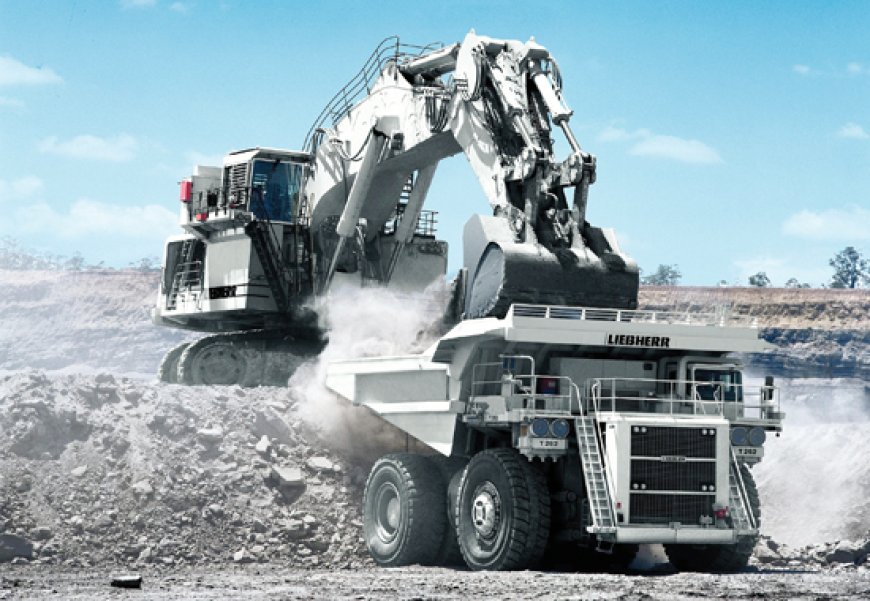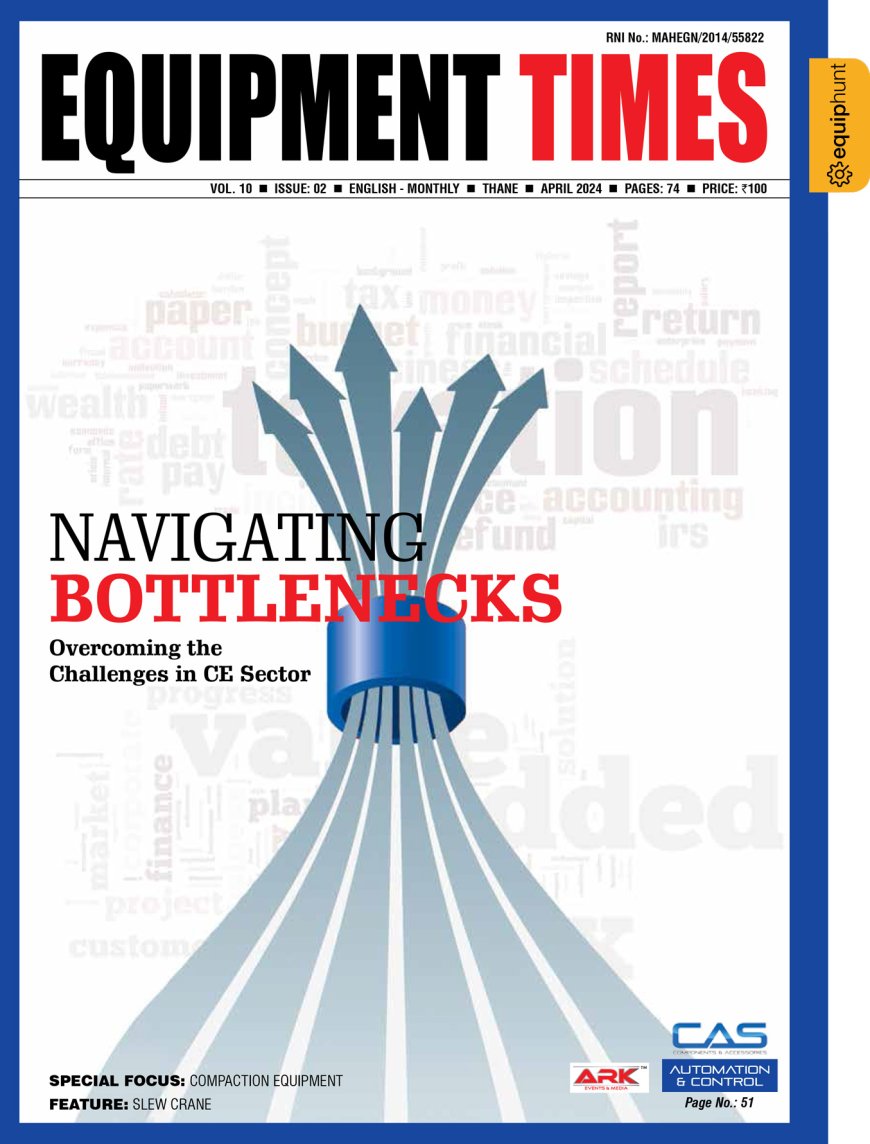The MDO concept is the future of the mining industry in India.
Ajmal Fawad Deputy Manager, Business Development, German Engineering Federation (VDMA). VDMA considers Industrie 4.0 of vital importance in the long term. Ajmal Fawad Deputy Manager, Business Development, German Engineering Federation (VDMA). German mining machinery manufacturers hold a

 Ajmal Fawad
Ajmal Fawad
Deputy Manager,
Business Development,
German Engineering
Federation (VDMA).
VDMA considers Industrie 4.0 of vital importance in the long term.
– Ajmal Fawad
Deputy Manager, Business Development, German Engineering Federation (VDMA).
German mining machinery manufacturers hold a positive outlook on the future, not only regarding the Indian market. “To reinforce the technology leadership German manufacturers and VDMA are going to develop a common program to improve the technical offers for the global customers in times of digitalization/ smart mining and sustainability/ green mining,” states Ajmal Fawad, Deputy Manager, Business Development, German Engineering Federation (VDMA). Fawad highlights the growth opportunities and challenges of the mining sector.
Could you give us an insight into the global mining industry scenario?
For the German mining equipment manufacturers, 2018 started ambivalent. The turnover increased but the incoming orders decreased. Last year, the major focus export markets were the USA (232 Mio. €), China (126 Mio. €), Russia (99 Mio. €), and Italy (90 Mio. €). The prospects on the foreign markets are quite positive. The sharp rise in incoming orders combined with the renewed increase in raw material prices in many areas are expected to result in increased turnover at least over the next two years. However, this requires a certain level of political stability in the purchasing countries.
How do you assess the equipment utilization in India, especially with regard automation and IT related solutions?
Equipment utilisation in the India is below international standards. Besides, the level of automation and IT adoption remains at a nascent stage, although some companies have started making some progress in this regard. There are several challenges that come in the way of adoption of these technologies. With incompatible and disconnected IT solutions being used in silos and most of the data generated being unused, the level of technology deployment is yet to mature.
What contributory role German OEMs play here?
To reinforce the technology leadership German manufacturers and VDMA are going to develop a common program to improve the technical offers for the global customers in times of digitalization/ smart mining and sustainability/ green mining. At the end of the year we expect some first results.
Some other ideas that the teams from different companies and universities in Germany are developing include laser and X-ray-based sorting systems capable of more efficiently ascertaining the raw material content of mined rock. Close monitoring of machinery can also reduce costs, while at the same time preventing accidents. With this in mind, researchers at RWTH Aachen University’s Institute for Mineral Resources Machine Technology teamed up with the company Etersys to design an infrared camera system that is able to quickly identify any tears or other damage to conveyor belts.
VDMA considers Industrie 4.0 of vital importance in the long term, not only to the mining equipment manufacturers but also to German engineering as a whole. Industrie 4.0 allows increase in productivity together with a minimization of personnel costs.
What is the export scenario of equipment from Germany to India?
The Indian mining sector has been a success story in waiting for decades. Despite enjoying an endowment of the top 5 or 6 reserves globally across commodities such as thermal coal and iron ore, the mining industry has remained relatively small and stagnant. In fact over the last decade, the contribution of mining to India’s GDP has fallen from 1.2 per cent to 1 per cent.
Compared to the previous years, Germany could make up losses and remains among the most important suppliers to the Indian mining industry. It ranks number three behind China which sold technology worth 154 million euro, and Italy (60 million euro). With regard to India the situation looks brighter: from January to November 2017 exports to India increased by nearly 87 % to more than 47 million euros.
What will be impact of the expected growth on the CAGR of mining equipment?
The government’s strong push to the infrastructure sector and the focus of mining companies on enhancing mining output have kept the demand for mining equipment on the rise. Meanwhile, the approval for auctioning of coal mines for commercial use by private players is also expected to allow the use of more advanced equipment and technology. Construction and mining equipment sales in India grew 17 per cent in 2017-18, building on the 36 per cent upswing witnessed in 2016-17. There is significant push from the government in the infrastructure sector. The Indian government’s move to cut GST rates on construction equipment from 28 per cent to 18 per cent has resulted in unprecedented demand in India over the last few months.
The construction and mining equipment industry is today pegged at $4.3 billion in value, forecasting industry volumes to spike upto over 1,20,000 units by 2021 growing at a CAGR of 20 per cent. The current industry volumes are close to 75000 units. Policy changes in the infrastructure segment are expected to boost the equipment industry to an estimated $ 7.5 billion
by 2020. Going forward, the Indian construction and mining equipment market will continue to be driven by construction, mining and other infrastructure investments. The macro economic situation, government policy and availability of funding will support this upsurge.
What is the demand-supply scenario for surface mining equipment?
The market size of the mining equipment industry is expected to cross Rs 513 billion for the year 2020-21 with highest investment in dumpers, followed by auxiliary equipment and excavators. 56% of the market by value is constituted by dumpers and 34% by excavators. Going forward, a slew of factors will continue to drive the equipment demand. These include increasing trend in contract mining, higher stripping ratios, focus on reducing carbon footprint, gradual adoption of technologies, etc. Equally important would be to train personnel so that the procured equipment is put to use in an efficient manner.
What is current scenario of underground mining? What are the reasons for the low percentage of UG mining?
India is the world’s third largest producer of coal and has the fifth-largest reserves globally. During 2001-02, open cast mining contributed to 82% and underground mining contributed to 18%. During 2014-15, open cast mining was approximately 91% and underground mining was 9%.
Underground mining in India has not been developed due to lack of new underground technologies. Hence no extraction technology has been exported to India for years. In this respect it is of importance that there are not so many underground operations in India but the need for mechanization of underground mining is still essential.
In order to maintain their leading position, particularly in the underground mining sector, manufacturers have been involved with Industry 4.0. The industry presented the first machinery to mine coal or other material entirely independently and autonomously in early 2010, and in global comparison is at the forefront of modernising its own production facilities. Furthermore German manufacturers and VDMA Mining do a lot to keep a leading position in mining technology, especially in underground mining. In our steering committee the manufacturers discuss the development in mining technology and promote collaborative research in cooperation with mining universities in Germany.
What are the trends in using long wall and roof & pillar technology in the Indian mines?
Underground mining in India has not been developed due to lack of new underground technologies. SCCL has commenced production from the first of its kind in India, long wall technology in Adriyala Shaft Project in 2014 with a rated capacity of 2.81 MTPA capacity imbibing international standards. It has around 47 mines, of which 16 are opencast mines and 31 are underground mines. In order to achieve the target of 100 mt by 2020, SCCL is planning to start 20-25 new mines in the near future, of which seven mines are expected to start production in
FY 2017.
How do you assess the scope of incentivizing investments in the mining equipment sector?
With a large consumer base, India is a consumption-driven economy and manufacturing for domestic consumption has to be encouraged and facilitated, with the twin objective of creating large employment opportunity in the organized sector and fuelling the economic growth.
The large scale manufacturing for domestic markets would make us more competitive from both cost and quality stand point of view and provide opportunities for exports to developed countries. But before that, the government has to view the manufacturing sector from the macro as well as micro levels to understand the levers that would accelerate the growth of this sector.
What is the impact of the government allowing commercial mining of coal and pursuing large and long term MDO contracts?
A number of policy measures are in works to revive the sector that saw earnings take a beating due to softening prices and subdued demand. The recent Cabinet decision to open up coal mining to commercial miners, who will now have the freedom to sell coal in the open market, is an interesting development. For decades since its nationalisation, the public sector Coal India Limited (CIL) has dominated coal production in India, producing some 82 per cent of Indian domestic coal (figures from financial year 2014-15), and becoming the largest coal miner in the world by production. With this latest development, decision-makers expect private players to bring in competition along with private investment, technology adoption and international best practices.
The MDO concept is the future of the mining industry in India and will bring more efficiency in mining operations. The MDO approach is well known and popular in many mineral rich countries and even established companies participate under this mechanism. These contract mining companies are specialised in mining operations. They provide ample scope for maintaining heavy and expensive machineries and provide time for training the staff as the coal sector is cyclical and vulnerable to changes in demands.
In the future the Coal Ministry is looking to offer more coal blocks with large reserves to MDOs. This is the right step towards production enhancement. Most importantly their presence will not hinder the growth of the private sector as they can continue with captive mining. The hiring of MDOs along with speedy development of the coal evacuation infrastructure is the way forward for the coal industry. In order to meet the coal demand of the country Coal India Limited (CIL) has also decided to implement some of its mine/projects through the Mine Developer and Operator (MDO) route. At present 54% of the total production is achieved through MDO Route.
What are the major challenges mining equipment sector faces?
Procedural and permit delays in mining operations, regulatory and administrative procedures, inadequate infrastructure facilities and sustainability have led to very low FDI inflows in the mining sector historically. However, with the promulgation of the MMDR Act, investment in mining and metals sector is expected to improve as it ushers in improved transparency and speed in licensing and permits.
What are the growth opportunities for German mining equipment OEMs (in India)?
German mining machinery manufacturers hold a positive outlook on the future, not only regarding the Indian market. An increasing number of companies are registering a rise in customer enquiries. Some sectors are also developing new areas of business, for example in hard-rock mining. They assume that demand for the raw materials extracted in hard-rock mining will increase substantially as a result of a global expansion in alternative methods of energy production. Manufacturers see the need for raw material producers to reduce costs as a further cause for optimism, since this can only be achieved by increasing efficiency. A global trend toward increasing safety also benefits German manufacturers.
Hits: 1557














